The Economics and Statistics Division maintains archives of previous publications for accountability purposes, but makes no updates to keep these documents current with the latest data revisions from Statistics Canada. As a result, information in older documents may not be accurate. Please exercise caution when referring to older documents. For the latest information and historical data, please contact the individual listed to the right.
<--- Return to Archive
For additional information relating to this article, please contact:
January 23, 2025EMPLOYMENT INSURANCE, NOVEMBER 2024 Monthly (November 2024 vs October 2024, seasonally adjusted regular beneficiaries)
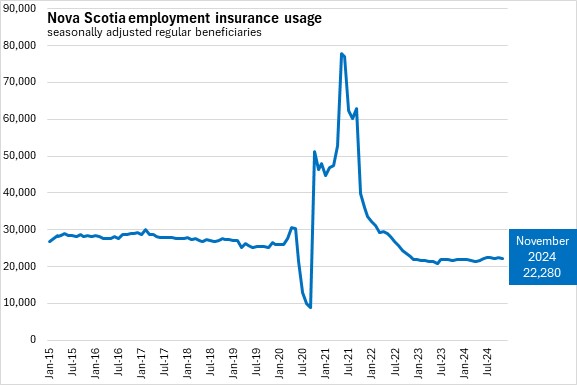
In November 2024, there were 22,280 Nova Scotians in receipt of regular employment insurance benefits (seasonally adjusted). Nova Scotia's seasonally adjusted regular employment insurance usage decreased by 130 (-0.6%) from October to November.
There were 481,860 Canadians that received regular employment insurance benefits in November 2024 (seasonally adjusted), a decrease of 4,210 (-0.9%) from October 2024.
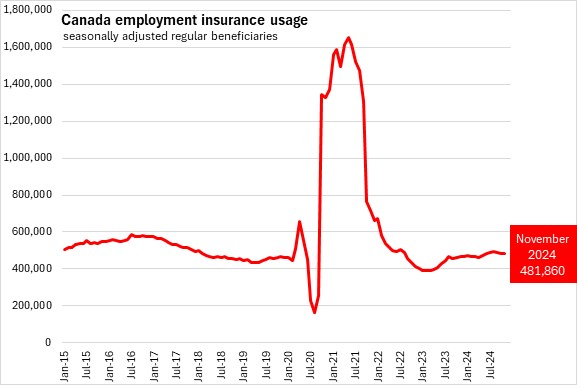
When compared to November 2024, all provinces except Ontario reported lower employment insurance usage. Saskatchewan reported the largest drop (-4.3%).

The number of employment insurance beneficiaries amounted to 4.1% of the labour force in Nova Scotia in November 2024. Nationally, the share of beneficiaries was 2.2% of the labour force. Newfoundland and Labrador had the largest share of beneficiaries of the labour force, while British Columbia had the lowest.
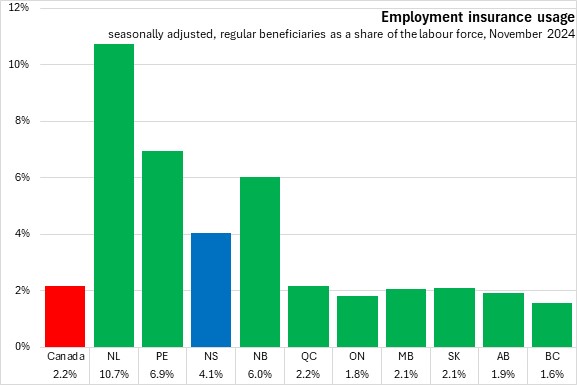
Year-to-date (January-November 2024 vs January-November 2023)
Comparing the first eleven months of 2024 to the same period in 2023, Nova Scotia's employment insurance usage was up by 1.6%. National employment insurance usage was up by 11.8% with gains in all provinces except New Brunswick and Newfoundland and Labrador. The largest gain in employment insurance usage was in Ontario (+24.4%).
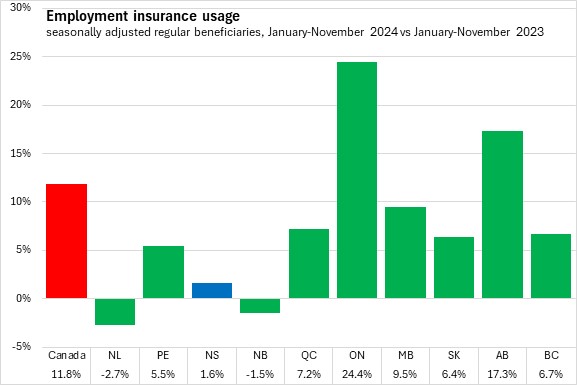
Year-over-year (November 2024 vs November 2023, seasonally adjusted regular beneficiaries)
Use of employment insurance (as a share of the labour force) was unchanged for workers aged 15-24 and lower for those aged 25-54. Employment insurance use was higher for workers aged 55 and older. Across all age cohorts, male use of employment insurance was higher as a share of the labour force than female use of employment insurance.
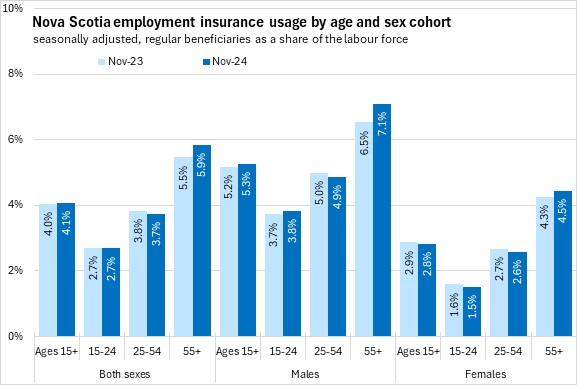
Use of employment insurance edged down for males and females aged 15 to 24 as well as for females aged 25-54. Males aged 25-54 and both males and females aged 55+ had higher employment insurance usage when compared to November 2023.
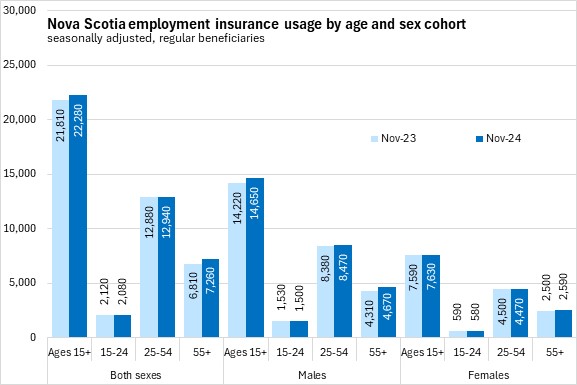
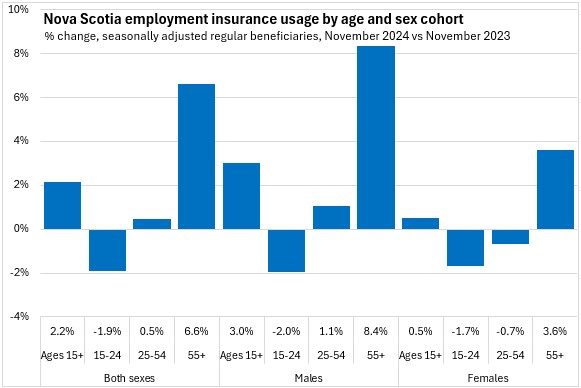
Comparing unadjusted regular beneficiaries for November 2024 against November 2023, use of employment insurance increased for all counties except Guysborough. Queens county reported the fastest rise.
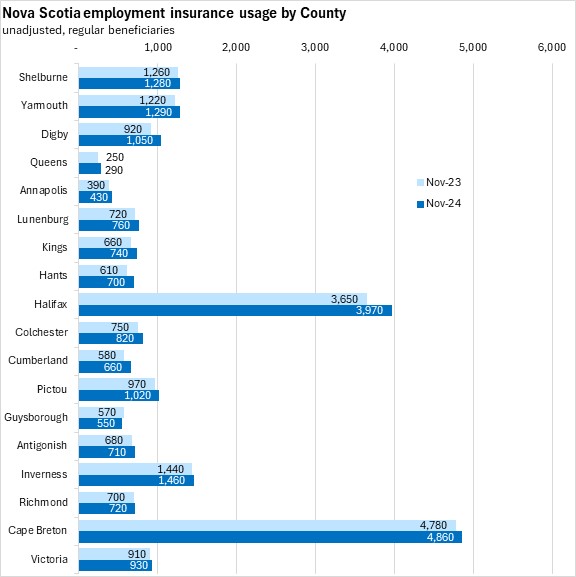
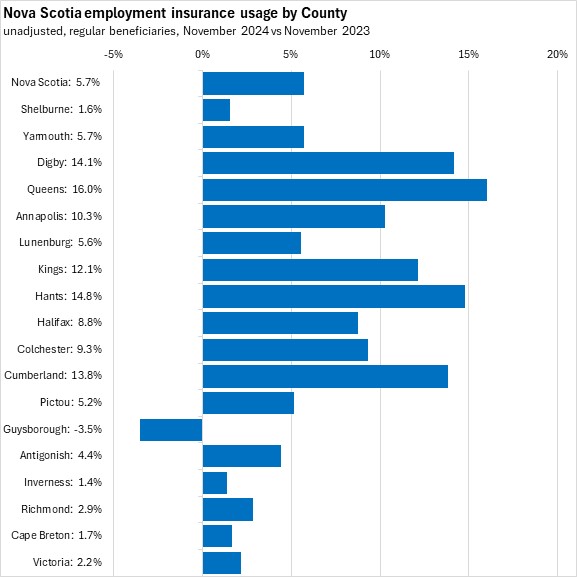
By occupation, technical trades and transportation officers/controllers reported the greatest employment insurance on average through the first eleven months of 2024.
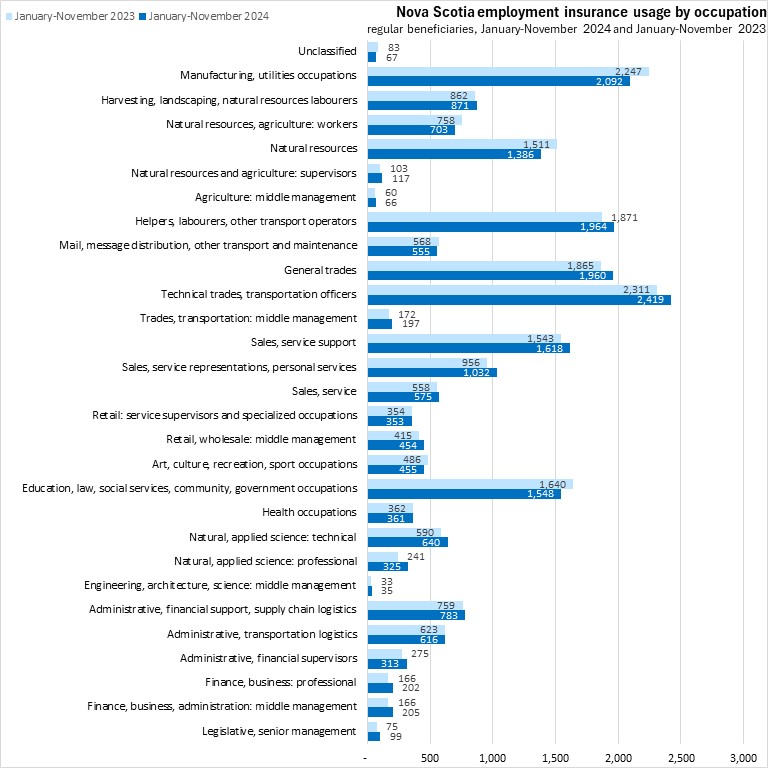
On a year-to-date basis (January-November 2024 vs January-November 2023), employment insurance usage grew fastest for professional occupations in natural and applied science as well as among senior management and legislative occupations. The largest year-to-date percentage decline in employment insurance use was among unclassified occupations as well as natural resources workers, agriculture workers and manufacturing/utilities occupations.
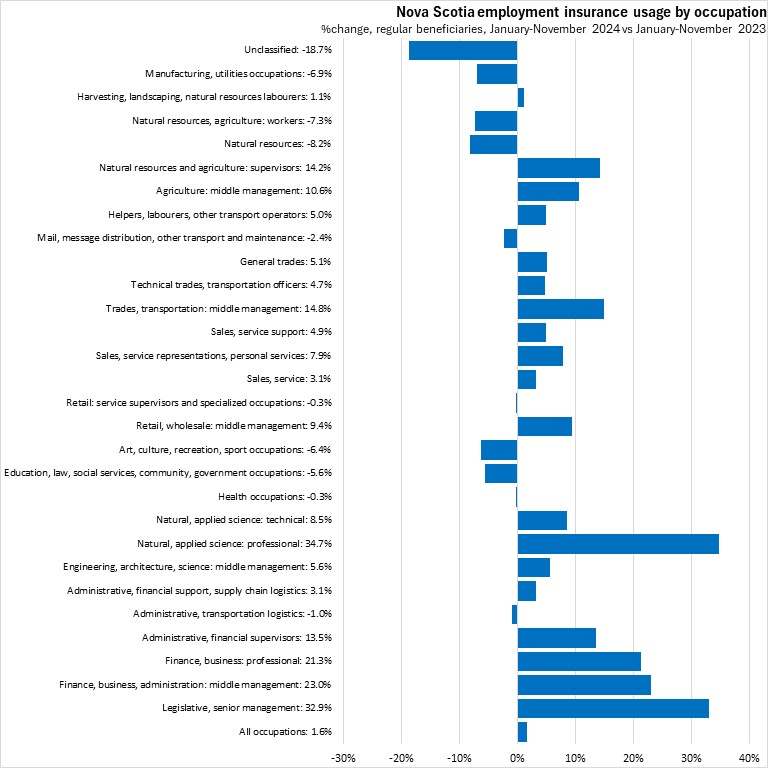
Source: Statistics Canada. Table 14-10-0011-01 Employment insurance beneficiaries (regular benefits) by province and territory, monthly, seasonally adjusted; Table 14-10-0323-01 Employment insurance beneficiaries by census division, monthly, unadjusted for seasonality; Table 14-10-0456-01 Employment insurance beneficiaries (regular benefits) by province, territory and occupation, monthly, seasonally adjusted; Table 14-10-0287-01 Labour force characteristics, monthly, seasonally adjusted and trend-cycle, last 5 months
<--- Return to Archive